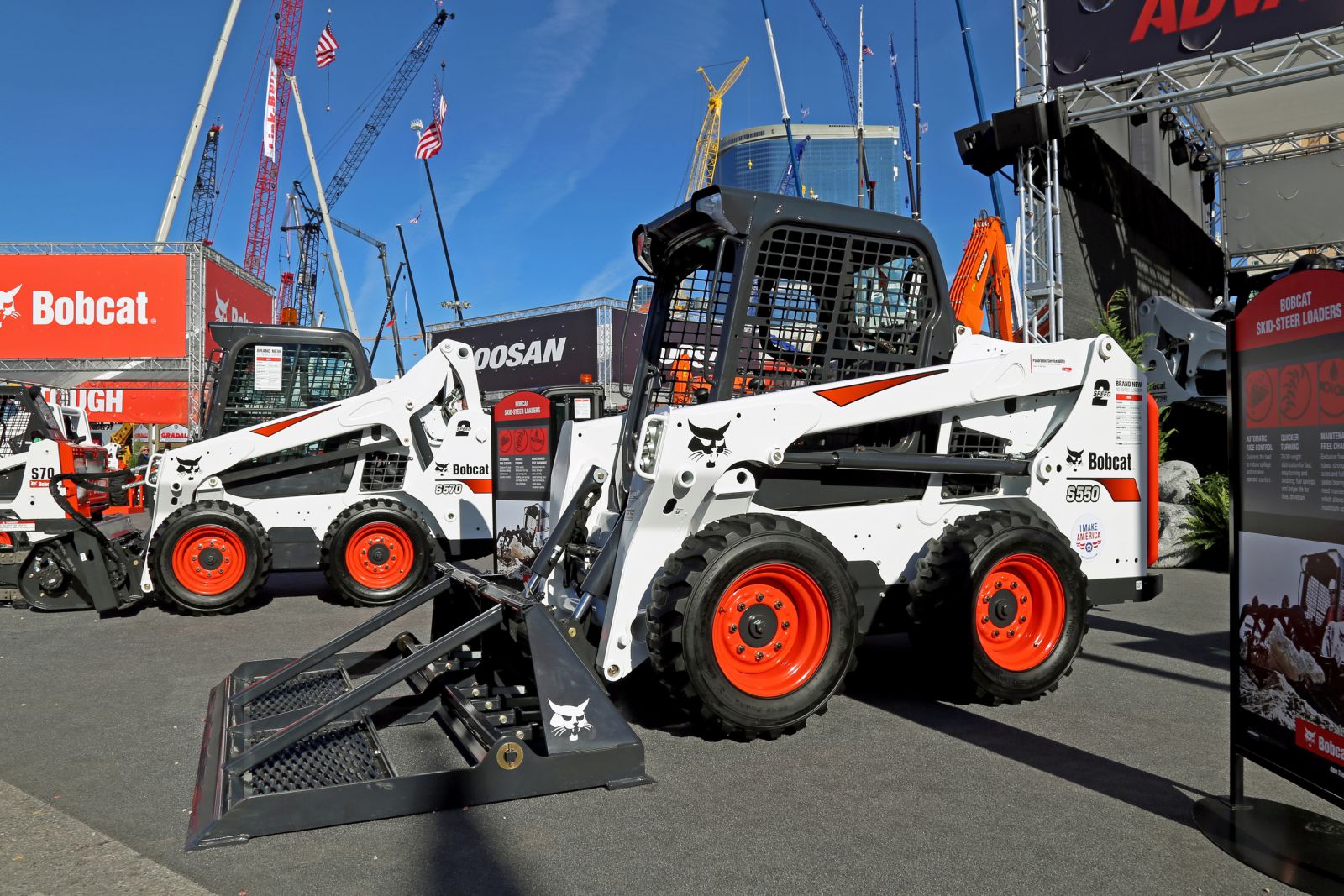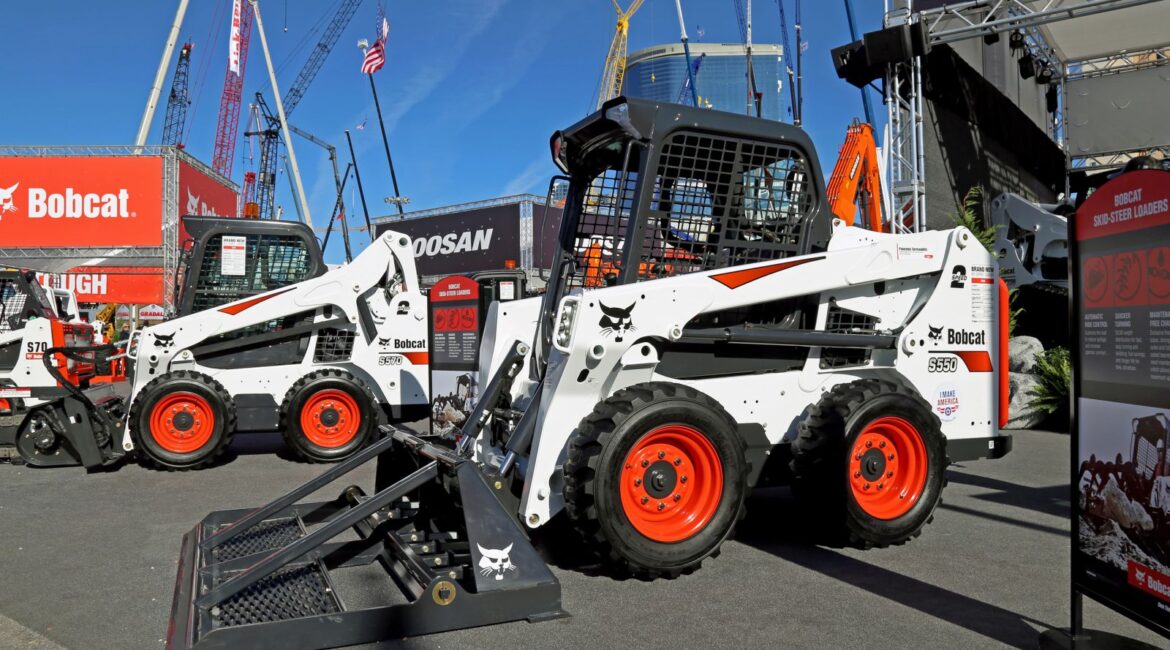What’s the scoop on the history of compact skid steers? Well, let’s dig in and uncover the fascinating story behind these versatile machines. Compact skid steers have come a long way since their inception, and they have revolutionized the construction and landscaping industries.
So, how did these compact powerhouses come to be? It all started back in the late 1950s when two brothers named Cyril and Louis Keller had an ingenious idea. They wanted to create a machine that could maneuver easily in tight spaces and handle a variety of tasks with ease. Little did they know that their vision would pave the way for the birth of the compact skid steer.
Fast forward to today, and compact skid steers have become a staple on job sites around the world. With their small size and incredible maneuverability, these machines can tackle a wide range of tasks, from grading and digging to loading and hauling. So, if you’ve ever wondered about the journey and evolution of compact skid steers, you’re in for a treat. Let’s dive in and explore the fascinating history of these incredible machines.

The Evolution of Compact Skid Steers: A Look Back in Time
Compact skid steers have revolutionized the construction and agricultural industries, offering unmatched versatility and efficiency in a compact package. These machines have come a long way since they were first introduced, undergoing significant advancements in design and functionality. In this article, we’ll take a fascinating journey through the history of compact skid steers and explore the key milestones that have shaped their evolution.
The Birth of the Compact Skid Steer: Invention and Early Innovations
It all began in the late 1950s when a North Dakota-based company called Keller Manufacturing developed the first compact skid steer, which they initially called the “loader backhoe.” This innovative machine was designed to navigate confined spaces with ease while providing impressive lifting and loading capabilities. However, the early models lacked some of the features and refinements that we see in modern compact skid steers.
In the subsequent years, other manufacturers recognized the potential of this compact powerhouse and started developing their own versions. In the 1960s, the iconic Bobcat Company introduced the Bobcat M440, which featured a vertical lift design and an innovative “quick attach” system that allowed for seamless attachment changes. This design paved the way for increased efficiency and productivity, making the Bobcat M440 a game-changer in the industry.
As demand for compact skid steers grew, manufacturers like Case, John Deere, and New Holland entered the market with their own models, each bringing unique features and improvements. These early innovations set the stage for the rapid advancement of compact skid steers, laying the foundation for the machines we rely on today.
The Technological Leap: Hydraulics and Enhanced Maneuverability
One of the most significant advancements in the history of compact skid steers came in the late 1960s with the introduction of hydraulic systems. This technological breakthrough allowed for smoother operation, improved lifting capacities, and enhanced maneuverability. With the integration of hydraulics, operators gained better control over the boom and other attachments, enabling them to tackle a wider range of tasks with precision and efficiency.
During this period, manufacturers also focused on refining the size, weight distribution, and center of gravity of compact skid steers to optimize stability and maneuverability. These advancements led to the introduction of radial lift and vertical lift designs, each offering unique benefits in specific applications. The radial lift design prioritizes maximum reach and lifting capacities, making it ideal for tasks such as digging and loading. On the other hand, the vertical lift design offers superior vertical lift paths, enabling efficient dumping and carrying of materials.
Mechanical advancements in the form of improved power management systems, advanced control technologies, and enhanced fluid dynamics further elevated the performance of compact skid steers. These innovations enabled operators to work more efficiently, reducing fatigue and increasing productivity.
Modern Marvels: Fuel Efficiency and Operator Comfort
In recent years, the evolution of compact skid steers has focused on environmental sustainability and operator comfort. With increasing awareness about carbon emissions and fuel efficiency, manufacturers have been investing in developing more eco-friendly models, incorporating advanced engine technologies and intelligent fuel management systems. These modern machines boast reduced fuel consumption while maintaining the power and performance that operators depend on.
Operator comfort has also become a top priority in the design of compact skid steers. Features such as ergonomic controls, adjustable seating, and improved suspension systems enhance operator experience and minimize fatigue, ultimately increasing productivity on the job site. Additionally, advancements in cabin design have improved visibility and sound insulation, creating a more pleasant and safe working environment.
Looking ahead, the future of compact skid steers promises even more advancements, with the integration of electric and autonomous technologies on the horizon. These developments aim to further enhance efficiency, reduce carbon footprints, and provide unparalleled convenience for operators.
Compact Skid Steers in the Digital Age: Connectivity and Telematics
In this digital era, compact skid steers are being equipped with advanced telematics systems that provide valuable data for machine management. These systems offer real-time information on engine performance, maintenance needs, and work statistics. By leveraging this data, operators and fleet managers can optimize machine utilization, improve preventive maintenance practices, and enhance overall efficiency.
Connectivity features are also becoming increasingly common in modern compact skid steers. Wireless technology allows for remote monitoring and control, enabling operators to access machine data, diagnose issues, and even perform software updates from their smartphones or computers. This connectivity revolutionizes fleet management and simplifies maintenance processes, saving time and reducing downtime.
As compact skid steers continue to evolve, their impact on various industries becomes increasingly amplified. From their humble beginnings as loader backhoes to the advanced machines we see today, compact skid steers have proven to be invaluable tools for construction, agriculture, landscaping, and much more. With ongoing technological advancements, these versatile workhorses will continue to play a vital role in shaping the future of modern industry.
Key Takeaways: The History of Compact Skid Steers
- Compact skid steers have a rich history that dates back to the late 1950s.
- The first compact skid steer was developed by the Keller brothers, who initially used it for chicken coop cleaning.
- Bobcat Company played a major role in popularizing and advancing compact skid steer technology.
- The introduction of hydrostatic drive systems revolutionized the compact skid steers, providing greater versatility and control.
- Today, compact skid steers are widely used in construction, landscaping, and agriculture due to their compact size and maneuverability.
Frequently Asked Questions
Welcome to our frequently asked questions about the history of compact skid steers. Here, we’ll dive into the details of how these versatile machines have evolved over time and become an essential tool in various industries.
1. When were compact skid steers first invented?
The concept of the skid steer dates back to the late 1950s when a company called Melroe Manufacturing (now known as Bobcat Company) introduced the first skid-steer loader. This early version was larger and more cumbersome compared to the compact skid steers we are familiar with today. It wasn’t until the early 1980s that manufacturers started producing compact skid steers, which were designed to be more maneuverable and versatile for tight spaces.
These compact skid steers quickly gained popularity in the construction industry, as their smaller size allowed for easy navigation on job sites and in confined areas. Over the years, advancements in technology and engineering have made compact skid steers even more efficient and powerful.
2. What are the key benefits of using compact skid steers?
Compact skid steers offer a range of benefits that make them indispensable in various industries. One key advantage is their versatility. These machines can be equipped with a wide array of attachments, such as buckets, forks, and sweepers, allowing them to perform multiple tasks on job sites. Their compact size also enables them to access tight and confined spaces, making them valuable in urban settings or construction projects with limited space.
Another benefit is their maneuverability. Compact skid steers have a unique skid-steer design, where the wheels on each side can operate independently. This skid-steer functionality allows for tight turns and precise control, making it easier to navigate around obstacles and work efficiently. Additionally, compact skid steers are known for their ease of operation, as they are designed to be user-friendly even for entry-level operators.
3. How have compact skid steers evolved over time?
Since their inception, compact skid steers have gone through significant advancements to enhance their performance and efficiency. Early models were often limited in terms of engine power and lifting capacity. However, as technology progressed, manufacturers were able to improve these aspects, allowing for higher horsepower and increased lifting capabilities.
Furthermore, advancements in hydraulics have led to improved control and precision, making compact skid steers even more versatile in various applications. The development of ergonomic features, such as comfortable operator cabins and user-friendly control systems, has also played a role in the evolution of these machines. Today, compact skid steers come equipped with advanced features like joystick controls, hydraulic quick couplers, and even GPS technology, making them more efficient and productive than ever before.
4. What industries benefit the most from compact skid steers?
Compact skid steers find applications in a wide range of industries due to their versatility and maneuverability. The construction industry extensively uses these machines for tasks like landscaping, material handling, and excavating. They are also commonly used in agriculture for activities such as loading and unloading, feeding livestock, and operating attachments like hay forks. In the forestry industry, compact skid steers are utilized for brush clearing and moving logs. Additionally, compact skid steers are employed in municipal maintenance, snow removal, and even in the residential sector for tasks like landscaping and property maintenance.
Overall, any industry that requires maneuverability, versatility, and efficient performance in confined spaces can benefit from the use of compact skid steers.
5. Are there any safety considerations when operating compact skid steers?
While compact skid steers are designed with safety features, it is essential to follow proper guidelines to ensure safe operation. Operators should receive proper training on the operation of compact skid steers and familiarize themselves with the manufacturer’s recommended practices. It is crucial to wear the necessary personal protective equipment (PPE), such as helmets, safety glasses, and high-visibility vests.
Operators should also be aware of the machine’s load capacity and never exceed it, as overloading can lead to instability and accidents. Regular maintenance checks, including inspections of the hydraulic system, engine, and tires, should be conducted to ensure safe operation. Additionally, operators should always be mindful of their surroundings and communicate with others on the job site to prevent accidents due to blind spots or unexpected movements of the machine.
STORY OF BOBCAT® – The Birth of Compact Industry’s Iconic Brand
Summary
Compact skid steers have a long history, starting in the 1950s. They were originally designed for farming tasks and were powered by a belt system. Over time, they evolved into hydraulic-powered machines with improved maneuverability and versatility. Today, compact skid steers are used in various industries, including construction, landscaping, and agriculture. They are compact, powerful, and can easily navigate tight spaces, making them a valuable asset for many tasks.

